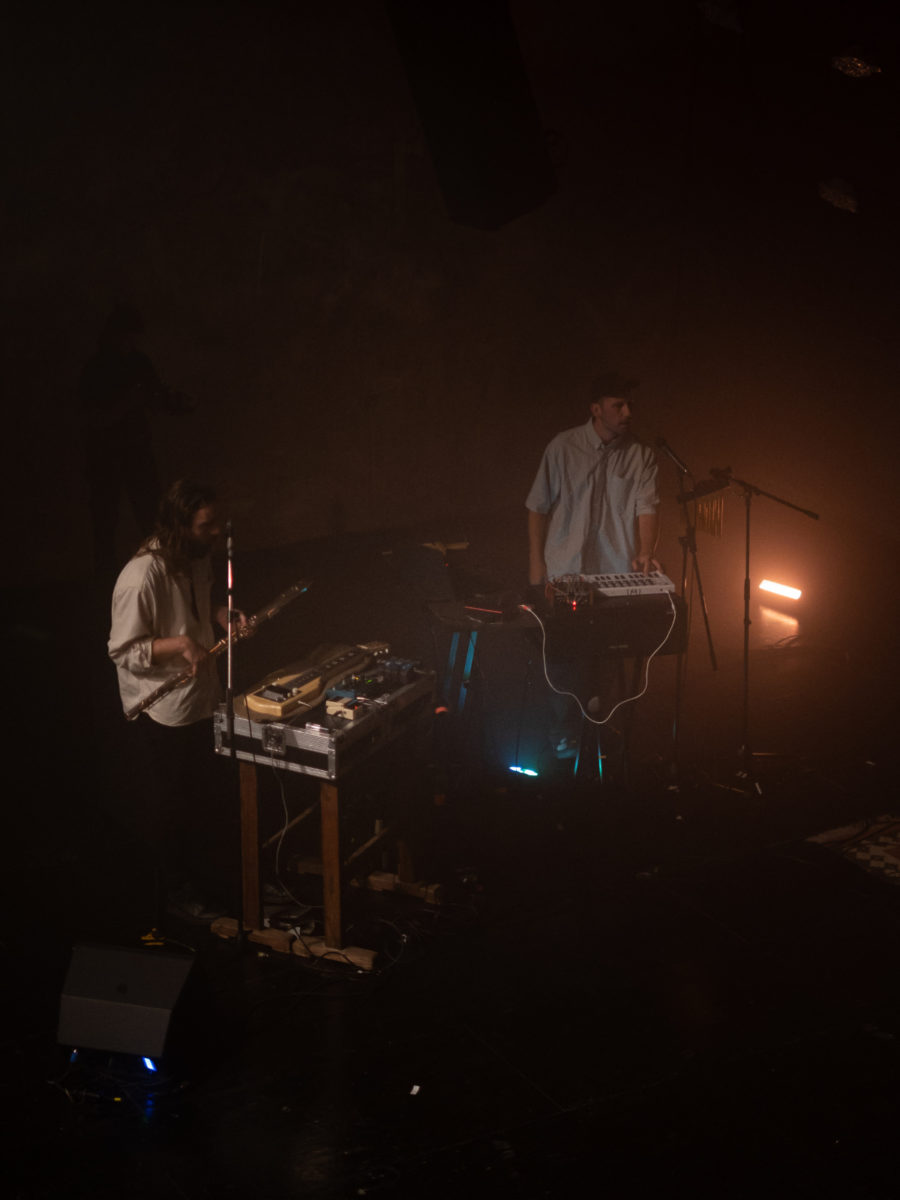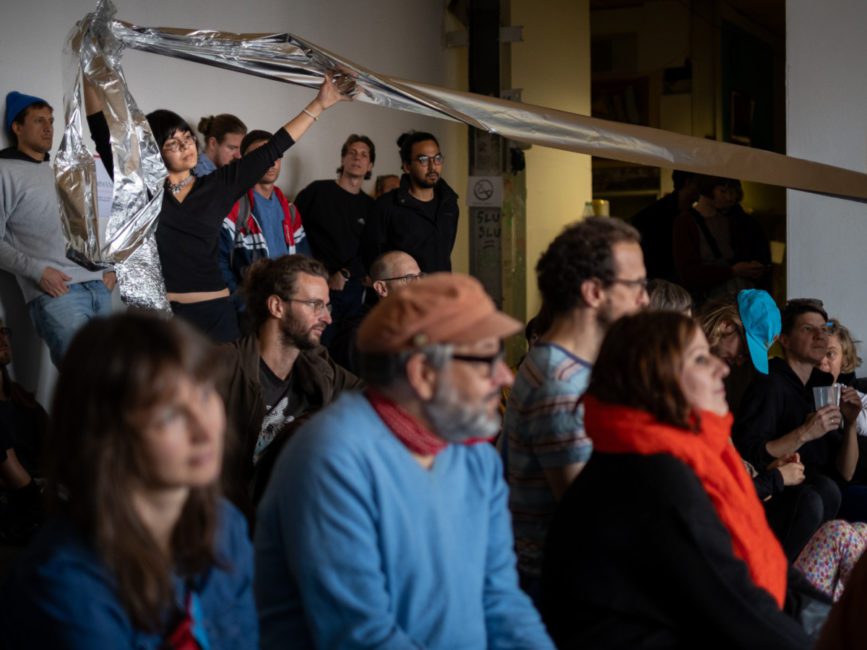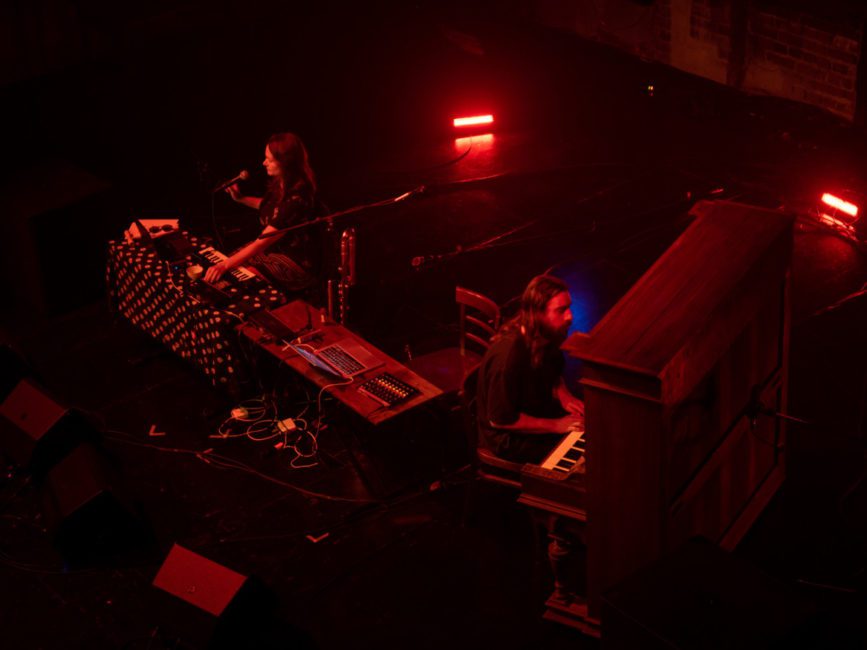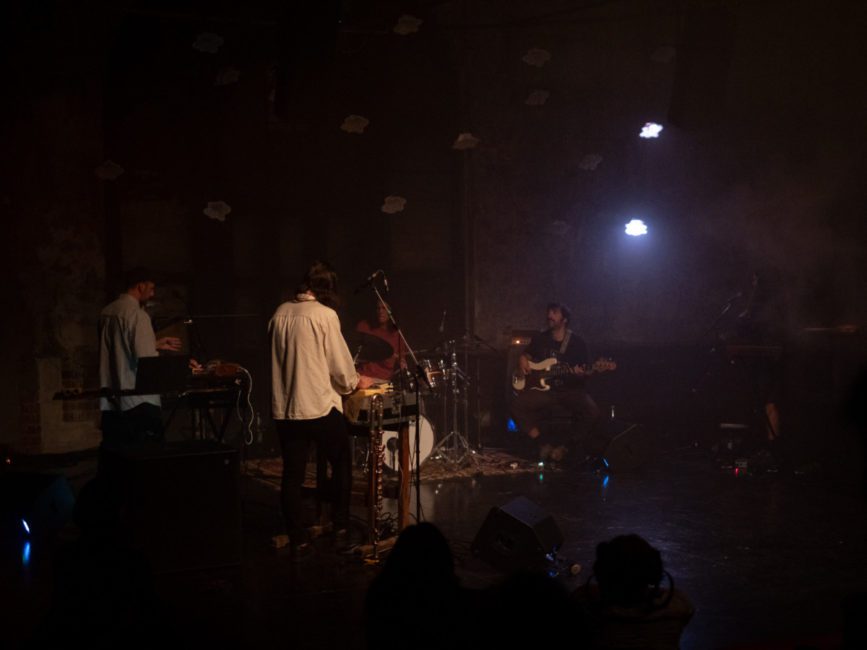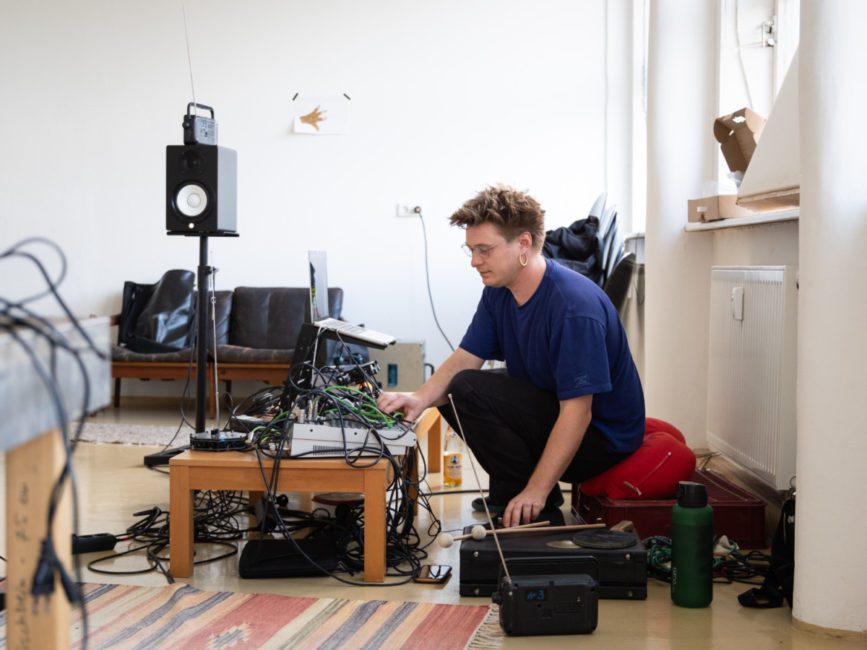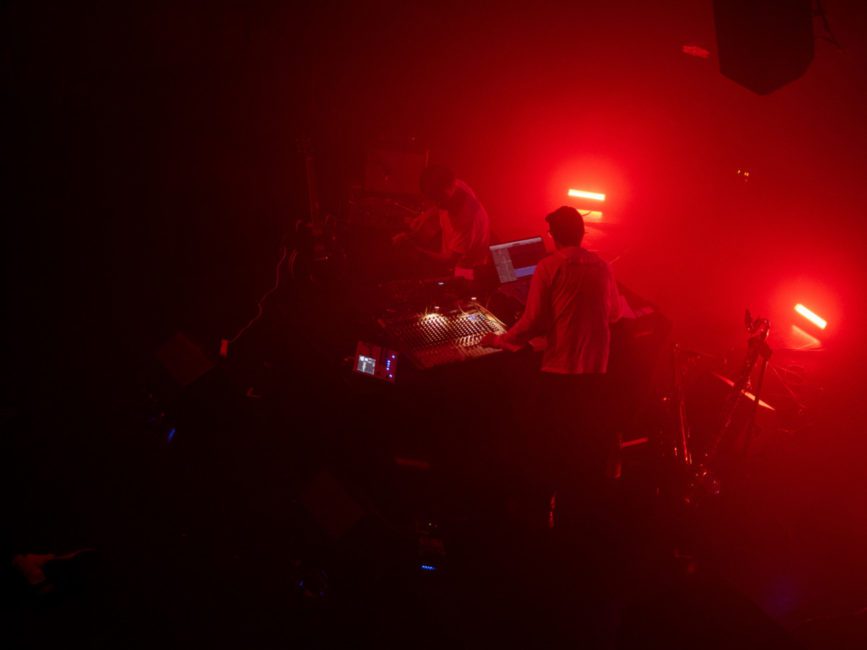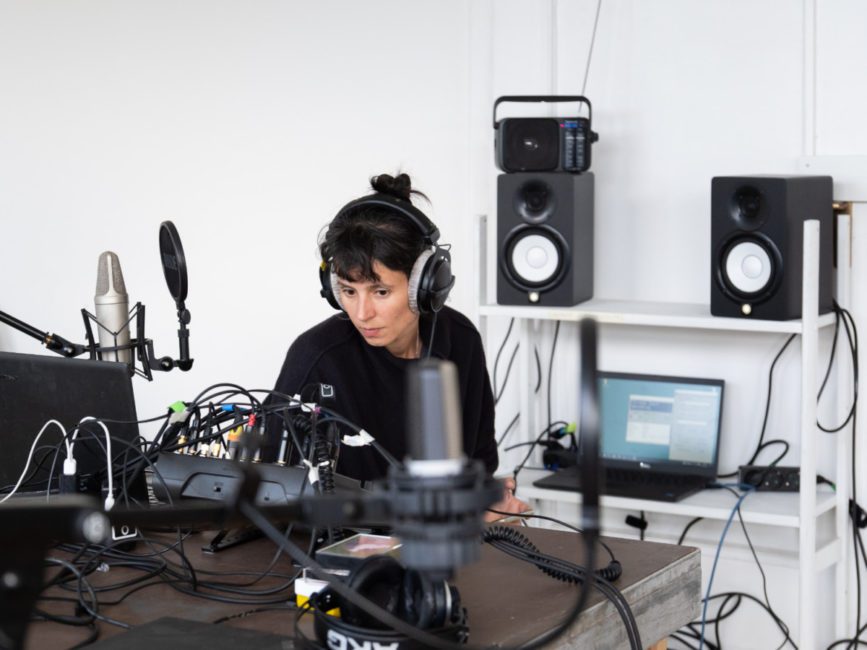Nestled in the heart of Leipzig, on a late September evening, Seanaps Festival kicked off their seventh edition, bringing together trans-disciplinary acts of experimental music and arts of various contemporary cultures.
Under the thematic umbrella of ‘Composing Future‘, the festival was a creative and intellectual stimulation spread across six diverse locations in the quaint city, captivating attendees through a combination of sensory experiences.
Only a short train trip from Berlin (1 hour 20 mins ), on a slow Friday morning, I hurtled towards Leipzig to spend a whole day at Seanaps for a first-hand experience. A partly cloudy weather forecast with a slight chance of rain greeted lazy chill winds of approaching Autumn as I stumbled onto the town’s Hauptbahnhof for the first time with a bag, a book and a schedule of the festival.
Upon arrival at the festival site, I wandered around the wildly enchanting performance hall of Westflugel. The big walls of the hall, run-down and peeling, hold fond memories of its ancestral use as a ballroom first and then a factory. Moments later, the same walls served as a backdrop to an evening of thought-provoking introspection prompted by the modern experimental endeavours of eccentric artists.
Soon enough, the sounds of Australian artist Felicity Mangan‘s rendition of “quasi-bioacoustic music” drew into a bewitched sonic journey woven from rhythmic patterns of her obtained field recordings. Seated under a centre stage light, Mangan composes twisted atmospherics, filling the room with eerie electronics reminiscent of the unknown while also lush with life from the source.
The evocative energy seamlessly transitioned into explorations of alternative communication and natural connections by London-based multi-instrumentalist Damsel Elysium. Playing a one-person band, Elysium’s mastery of various instruments, including double bass, violin and piano, with a neoteric take on sound, incorporating anti-colonial practices, crafted an audio-visual experience that urged contemplation on humanity’s relationship with the natural world.
For such a night’s crescendo, the festival deserved a closing show like that provided by the Wild Terrier Orchestra, led by Dimitris Papadatos, alias Jay Glass Dubs. Their avant-garde performance, combining surrealistic techniques, contrasting fragments of timbres and tones, and disruptive sounds, illustrated the power of free improvisations and experimental acoustic music.
Bringing new dynamics to the overall festival experience, the notable interventionist research by sound artist Yun-Chu Liang, delving into the intricacies of mutual care work as featured at venue Westwerk, and the timely screenings of Jane Jin Kaisen‘s evocative film, “Burial of This Order” at Techne Sphere added depth to the festival’s ethos, sparking reflection on societal structures and the significance of collective action.
In a day’s deep-dive, brief, yet sweet, Seanaps Festival’s emphasis on experimental art and music underscored Leipzig’s small and notoriously creative underground scene, exemplifying its commitment to building a stage for its local talents.
Photography by Julia Santoli, Ines Könitz und Corinna Mehl.
